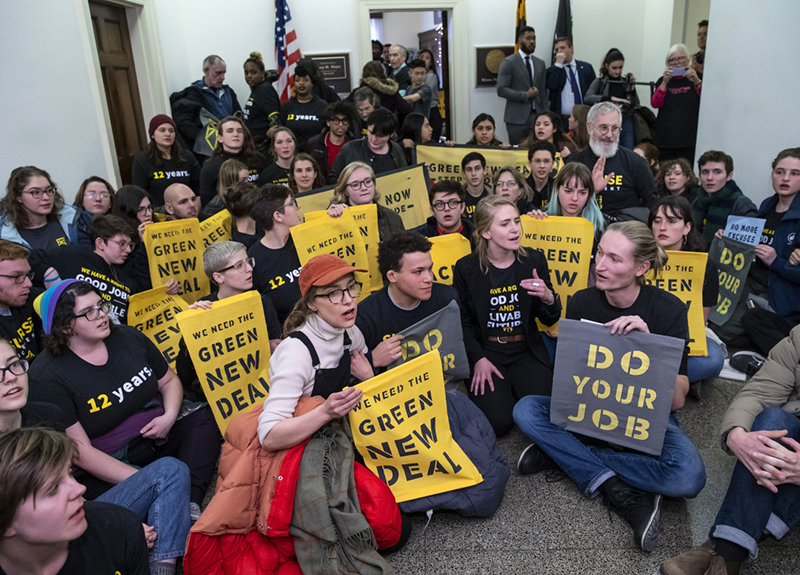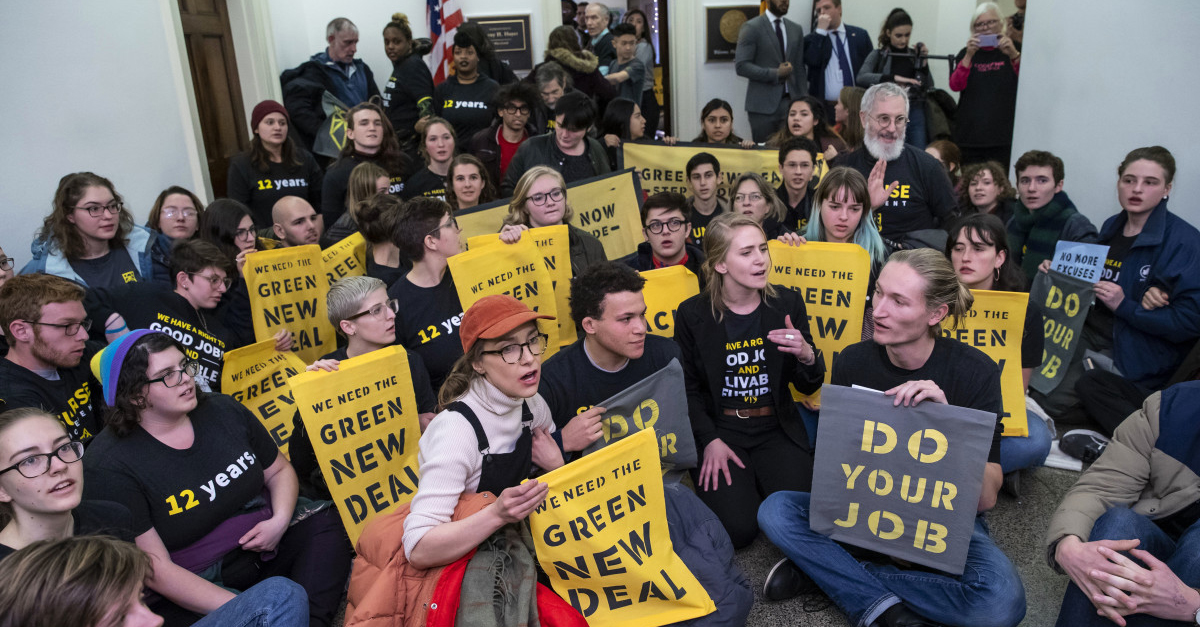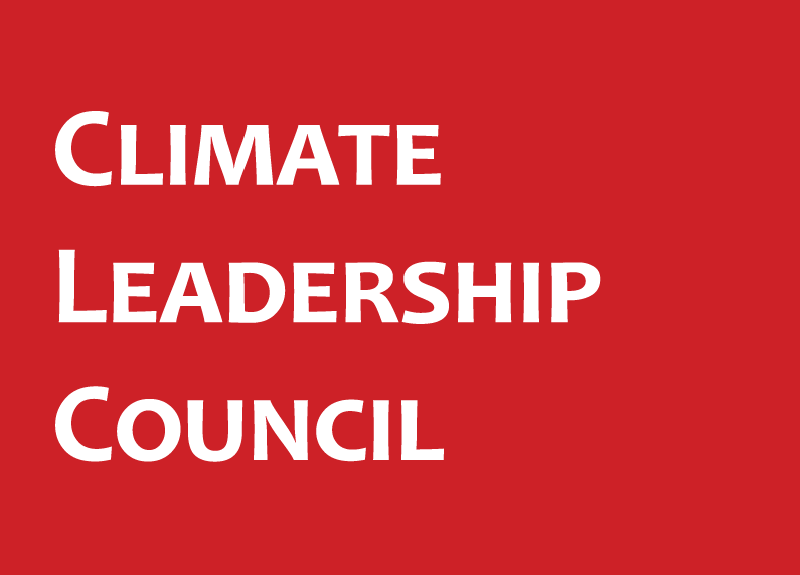Opinion: Why fans of the Green New Deal — and everyone else — are underestimating the potential of carbon taxes to curb climate change.
By Professor Monica Prasad (Northwestern) // Originally published by POLITICO
In recent months, a renewed sense of urgency around climate change has become palpable, and a debate is brewing about the boldest, most effective solution. Even among those who want strong and immediate policy solutions, a major split has opened up among those who support carbon tax and those who oppose it. Carbon tax—the idea of levying a tax on carbon emissions, so that polluters would pay to contain and repair the damage caused by their pollution—is the most popularpolicy among environmental scholars, who are generating increasing evidence that it’s the most cost-effective climate change mitigation policy. It’s even attracting support from business groups such as those that finance the Climate Leadership Council.
But the progressive young idealists responsible for the “Green New Deal” are largely dismissive; they included it in the Green New Deal but see it as just one option. Many are suspicious of a carbon tax precisely because business groups support them, and they often dismiss a carbon tax as a half-hearted measure, arguing that something bolder that captures the imagination is necessary. Evan Weber, national political director of the Sunrise Movement and an ally of Rep. Alexandria Ocasio-Cortez (D-N.Y.), recently told POLITICO that “the idea that [a carbon tax is] the way out of this mess is something we need to be pushing back on,” and he specifically cited its costs: “We haven’t even priced the policy at where economists say it needs to be.”
But the carbon tax is a much bolder policy than progressives think. One reason is that its real benefits have been obscured because of a quirk in how we analyze the policy: When economists study carbon tax, they analyze only the costs and they don’t include the benefits.
This is mind-boggling, but true. A recent World Bank paper reviewed several decades of scholarship on carbon tax, and found only a handful that actually attempt to include the environmental benefits in a full assessment of costs and benefits. This is because it’s staggeringly complex to try to model the benefits. We don’t have good answers to how much the tax will change firms’ or consumers’ behavior, how that changed behavior will translate to reduction in carbon emissions, how quickly those lower levels of carbon emissions will affect the climate, and how those effects on the climate will translate to consequences like better health or fewer floods or wildfires. Trying to model all this would just be multiplying assumption upon assumption.
This is a familiar problem in cost-benefit analysis. The World Health Organization once implemented a program in Africa to counteract river blindness. The program eliminated the disease in 90 percent of the targeted area and stayed under budget. But the economists evaluating it could not conclude it was a success, because in areas with high unemployment and low educational achievement, curing blindness does not translate to quantifiable benefits like higher labor productivity and economic output. The authors of the report concluded: “There are humanitarian benefits associated with reducing the blindness and suffering” but “these benefits are inherently unmeasurable, and we will not account for them here.”
If you can’t count benefits, how do you evaluate a program at all? Scholars of carbon tax begin by identifying a particular target of carbon emissions reduction to hit, and they crunch the numbers to figure out what the most cost-effective policy would be to hit that target. It’s a perfectly rational strategy given the uncertainty. The problem is that it penalizes policies that might have very dramatic effects on reduction of carbon emissions.
Consider the case of Denmark, which has reduced its aggregate carbon emissions by over a third in about 15 years. Its carbon tax works like this: part of the revenue raised from the tax is spent to subsidize renewable energy research and technology and energy efficiency. This should lead to reductions in carbon emissions at the front end—because the tax punishes those who emit carbon emission—as well as the back end—because the way the revenue is spent gives firms and consumers the technology and the tools to avoid carbon emissions.
It’s difficult to evaluate exactly how much of the emissions reduction is due to the carbon tax because of all the uncertainties about what effects carbon tax has on behavior. But we do know that people are most likely to reduce a certain behavior in response to a tax if they have a substitute available for the thing being taxed.If you give people alternative renewable energy fuel sources, in other words, they can take steps to lower their carbon emissions, and if you don’t give them these alternatives, you should not be surprised if they can’t lower their carbon emissions. In Denmark, the decision to channel carbon tax revenue into alternatives to fossil fuels may be responsible for the dizzying spiral in carbon emissions reductions. Importantly, Denmark does not seem to have paid a price in economic growth.
But in the analyses of carbon tax scholars, Denmark’s carbon policy actually counts as a failure on both counts. That’s because economists consider both the taxes and the subsidies “distortions” to a perfect free market (in which you wouldn’t tax anyone or subsidize anyone) and therefore as “costs.” And since they aren't including benefits, those costs are the end of the story. As the World Bank review cited above puts it: “Unlike the cases where carbon tax revenues are recycled to cut existing distortionary taxes, using carbon tax revenue to subsidize clean technologies … does not lower the economic costs of carbon tax. Instead it would increase the costs as recycling the revenue from one distortionary policy (i.e., carbon tax) to finance another distortionary policy (i.e., clean technology subsidy), exacerbating the economic distortions.”
In the end, cost-benefit analysis of carbon tax is pretty good at accounting for costs but not very good at weighing benefits. If you’re just trying to figure out the most economically cost-effective way to hit a particular emissions reduction target, this type of analysis can help you pick the best of several policy options. What it can’t do is take into account the benefits of the goal itself or tell you how to reach the goal faster. If your goal is to catalyze a spiral of ever-greater emissions reduction—to save the world from climate disaster by trying to jumpstart a process that can lead to as quick a conversion to renewable energy as possible—this way of analyzing carbon tax drastically underestimates its potential.
Green New Deal reformers should take another look at carbon taxes. They are not half-hearted measures. A carbon tax that uses the revenue to make investments into renewable energy and energy efficiency could produce exactly the green jobs program the activists dream of, while kicking off dramatic emissions reductions. Economically, politically, and environmentally, carbon taxes may be the best policy we have right now, and could quite literally save the world.
Monica Prasad is a professor of sociology and faculty fellow at the Institute for Policy Research at Northwestern University. She is the author of Starving the Beast: Ronald Reagan and the Tax Cut Revolution.







